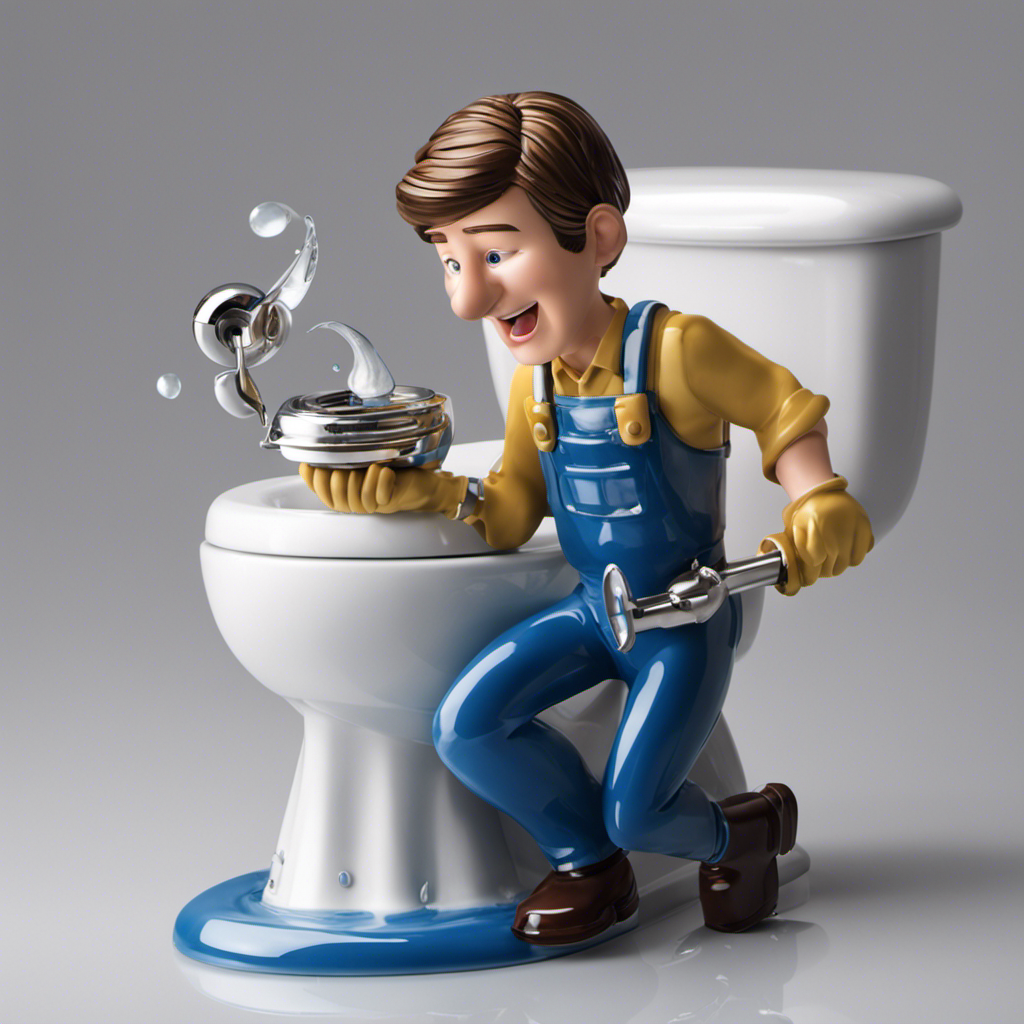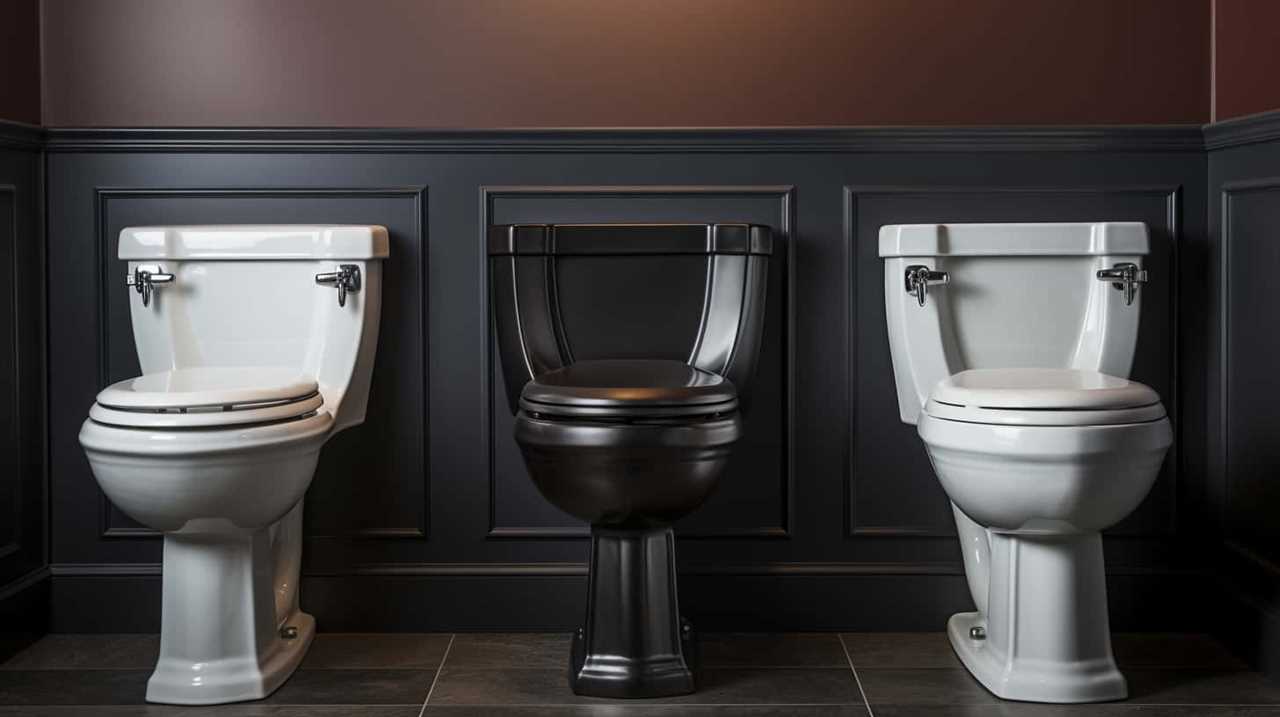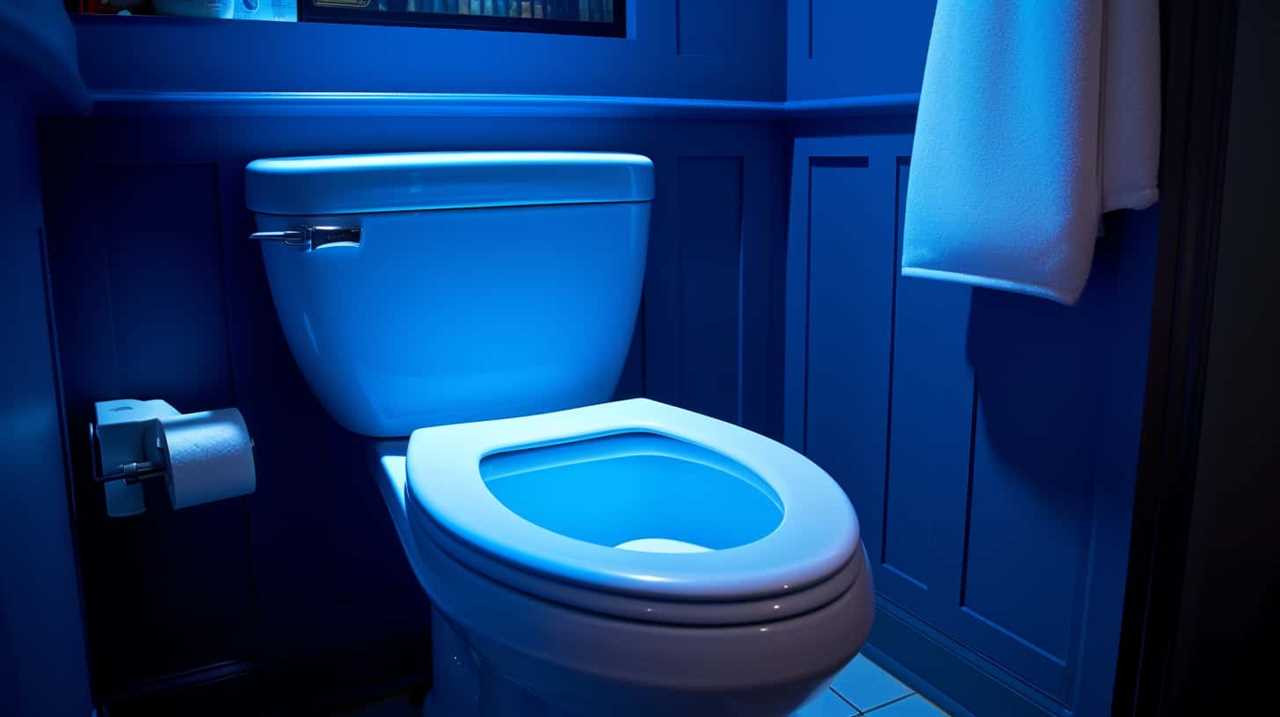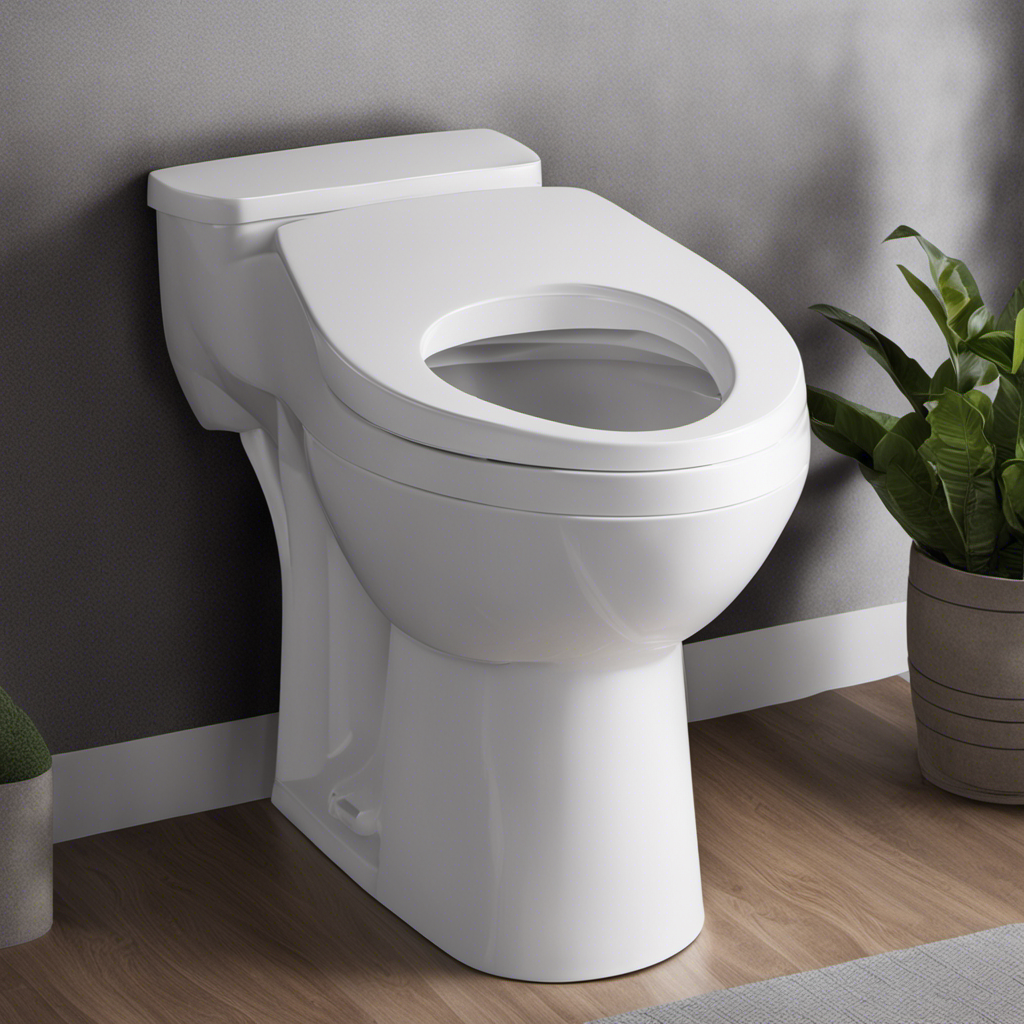Ever wondered how to fix a toilet handle that’s been giving you trouble? Well, look no further! In this article, I’ll guide you through the steps to get your toilet handle back in working order.
With just a few simple tools and a little know-how, you’ll be able to tackle this DIY project with confidence.
So, let’s get started and put an end to that annoying toilet handle problem once and for all!
Key Takeaways
- Assess the problem by identifying the handle malfunction and checking for loose connections or a broken lever arm.
- Troubleshoot handle malfunctions by tightening the mounting nut, replacing the lever arm, or addressing common issues like a broken lift chain or misaligned flapper.
- Troubleshoot flushing issues by checking water flow and pressure, addressing low water flow or weak flush, and adjusting the chain or lift arm connecting the handle to the flapper.
- Make necessary adjustments and repairs such as adjusting the chain or lift arm, replacing or repairing the flapper, tightening or replacing the handle, checking for leaks, adjusting the water level, and testing handle functionality.
Tools Needed for the Job
To fix the toilet handle, you’ll need a few tools. The most essential tool is a screwdriver, preferably a flathead or Phillips head, depending on the type of screws used on your toilet handle.
Additionally, you may need an adjustable wrench to loosen or tighten any nuts or bolts that hold the handle in place. In some cases, a pair of pliers might be necessary to grip and adjust certain components of the handle mechanism.
It’s important to have a replacement toilet handle on hand as well, in case the existing handle is beyond repair. Common handle problems include loose connections, broken levers, or a handle that sticks or doesn’t flush properly.
Assessing the Problem
When it comes to fixing a toilet handle, it’s important to first assess the problem at hand. Identifying a handle malfunction is crucial in determining the appropriate solution.
Additionally, checking the water flow and troubleshooting any flushing issues are key points to consider in order to effectively address the problem.
Identifying Handle Malfunction
First, check if the toilet handle is loose or not functioning properly. Troubleshooting leaks and common handle problems is essential to fix toilet handle issues effectively.
A loose handle could be caused by a loose mounting nut or a broken lever arm. To fix this, simply tighten the mounting nut with a wrench or replace the lever arm.
Another common problem is a handle that doesn’t flush the toilet properly. This could be due to a broken lift chain or a misaligned flapper. Check if the lift chain is connected properly and adjust the flapper if needed.
If the handle is still not working, it may be time to replace the entire handle assembly. By identifying these handle malfunctions, you can quickly and easily resolve toilet handle problems.
Checking Water Flow
If the water flow in the toilet is weak or inconsistent, it could be a sign of a clogged pipe or a faulty valve. Checking the water pressure and water level can help determine the cause of the problem.
To check the water pressure, simply turn on a faucet in your home and observe the flow. If the pressure is low throughout the house, the issue may be with the water supply. On the other hand, if the pressure is normal in other areas but weak in the toilet, it is likely a localized problem.
To check the water level, remove the toilet tank lid and inspect the water level. It should be around one inch below the top of the overflow tube. Adjust the float mechanism if necessary to ensure proper water level and flow.
Troubleshooting Flushing Issue
To troubleshoot a flushing issue, start by checking the water flow and pressure in the toilet. Here are some troubleshooting techniques to help identify and resolve common flushing issues:
-
Low Water Flow: If the water flow seems weak, it may be due to a clogged water supply line or a partially closed shut-off valve. Check the supply line for any obstructions and ensure that the shut-off valve is fully open.
-
Weak Flush: A weak flush could be caused by a clogged or restricted toilet trap or a faulty flapper. Inspect the trap for any blockages and consider replacing the flapper if necessary.
-
Incomplete Flush: If the toilet doesn’t fully flush, the chain or lift arm connecting the handle to the flapper may be too loose. Adjust the chain or lift arm to ensure proper connection and allow the flapper to lift completely.
Adjusting the Chain or Lift Arm
When it comes to fixing a toilet handle, two key areas to focus on are chain length adjustment and lift arm alignment.
The chain length adjustment is crucial for ensuring that the toilet handle operates smoothly and effectively.
Chain Length Adjustment
You can easily adjust the length of the chain to ensure proper functioning of your toilet handle. Here are three steps to help you achieve the perfect chain tension:
-
Start by locating the chain attached to the toilet handle. It should connect to the lift arm inside the toilet tank.
-
Measure the length of the chain. It should have a slight slack when the handle is in its resting position.
-
If the chain is too long, you can adjust it by removing some links. Use pliers to open the chain link, remove the excess, and then reattach the chain.
Lift Arm Alignment
The lift arm inside the tank should be properly aligned for the smooth operation of the toilet. When the lift arm is misaligned, it can cause issues with flushing or make it difficult to operate the toilet handle.
To ensure that the lift arm is properly aligned, follow these steps:
-
Turn off the water supply to the toilet by shutting off the valve located behind the toilet.
-
Remove the tank lid and locate the lift arm, which is connected to the toilet handle.
-
Adjust the position of the lift arm so that it is aligned with the lever mechanism inside the tank.
-
Tighten any loose screws or nuts that may be causing misalignment.
-
Replace the tank lid and turn the water supply back on.
Replacing or Repairing the Flapper
To fix the toilet handle, start by checking if the flapper needs replacing or repairing. The flapper is a rubber valve that controls the flow of water from the tank into the bowl. Over time, it can wear out or become damaged, causing common flapper problems like leaks or incomplete flushes.
Proper flapper maintenance is essential to ensure the smooth operation of your toilet. Here’s a step-by-step guide:
-
Turn off the water supply to the toilet by closing the shut-off valve located behind the toilet.
-
Remove the tank lid and locate the flapper. It is usually connected to the flush valve at the bottom of the tank.
-
Inspect the flapper for any signs of wear or damage. If it is torn or warped, it needs to be replaced. If it is just dirty or misaligned, it can be cleaned or adjusted.
Tightening or Replacing the Handle
After checking the flapper, it may be necessary to tighten or replace the handle. If the toilet handle feels loose or wobbly, tightening it is a simple fix.
Start by removing the tank lid and locating the nut that holds the handle in place. Use a wrench or pliers to tighten the nut until it is snug.
If the handle is still loose after tightening, it may need to be replaced. To do this, first turn off the water supply to the toilet. Then, remove the nut and handle from the inside of the tank. Install the new handle by following the manufacturer’s instructions.
Before reassembling everything, make sure to lubricate the handle mechanism and clean the handle and surrounding area to ensure smooth operation. Once everything is in place, it’s time to move on to testing and troubleshooting the handle fix.
Testing and Troubleshooting the Handle Fix
Once you’ve completed the tightening or replacement process, it’s important to test and troubleshoot the handle to ensure it’s working properly. Here are three steps to help you troubleshoot and fix any issues with your toilet handle:
-
Check for leaks: After flushing, inspect the area around the base of the toilet for any signs of water. If you notice a leak, it could be due to a loose connection or a faulty seal. Tighten any loose connections and replace any worn-out seals to prevent further leaks.
-
Adjust the water level: If the toilet bowl fills up too high or too low after flushing, you may need to adjust the water level. Locate the water level adjustment screw or float and adjust it accordingly to achieve the desired water level.
-
Test the handle’s functionality: Give the handle a few test flushes to ensure it’s working properly. Make sure it’s easy to press down and that it effectively triggers the flushing mechanism. If you encounter any issues, double-check the handle’s installation and make any necessary adjustments.
Frequently Asked Questions
How Do I Determine if the Toilet Handle Is the Cause of the Problem?
To determine if the toilet handle is the cause of the problem, I would check for common toilet handle problems such as loose connections or a broken handle. These issues can often be fixed easily with a few adjustments or by replacing the handle.
Can I Fix a Toilet Handle Without Using Any Tools?
Sure, I can fix a toilet handle without tools. There are alternative solutions like jiggling the handle or adjusting the chain. Common toilet handle problems can be easily resolved with a little know-how.
What Should I Do if Adjusting the Chain or Lift Arm Does Not Fix the Problem?
If adjusting the chain or lift arm doesn’t fix the problem, there are alternative solutions. You can try replacing the flapper or calling a plumber for assistance.
How Do I Know if the Flapper Needs to Be Replaced or Repaired?
When the toilet refuses to flush properly, it’s like a stubborn door that won’t open. To determine if the flapper needs repair or replacement, look for signs such as continuous running or water leakage. DIY tips can save the day!
What Should I Do if Tightening or Replacing the Handle Doesn’t Solve the Issue?
If tightening or replacing the handle doesn’t work, there are alternative solutions. You could try adjusting the chain or float, checking for any blockages, or calling a professional plumber for assistance.
Conclusion
In conclusion, fixing a toilet handle is a simple task that can save you from a potential plumbing disaster. By using just a few tools and following the steps outlined in this article, you can restore the functionality of your toilet handle.
Remember, the handle is like the captain of a ship, guiding the flow of water and ensuring smooth sailing. So, don’t let a loose or broken handle leave you stranded. Take charge, fix it, and enjoy a well-functioning toilet once again.










